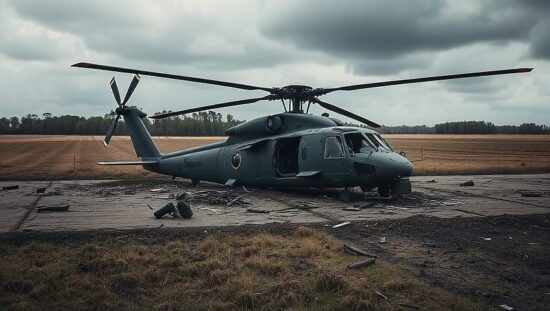A fatal training helicopter crash near Grimma, Saxony, at the end of July, has been attributed to a devastating pilot error, according to a report by “Der Spiegel”. A thorough investigation by the Bundeswehr’s General Flight Safety Department has ruled out any mechanical faults or irregularities in the EC 135 helicopter, which was leased for training purposes.
The incident, which resulted in the immediate deaths of three personnel – a female soldier and two male soldiers – involved the helicopter, callsign “Stallion 82” impacting the Mulde River. Experts now believe the aircraft was flying low over the river when its skids collided with a steel cable strung between pylons at a gauging station, situated approximately four to six meters above the water’s surface. The impact resulted in the helicopter plunging into the river, with the tail rotor detaching during the descent.
The flight, which originated from Holzdorf Air Base in Brandenburg on the morning of July 29th, experienced a sudden loss of radio contact around 10:00 AM. Crucially, the reason the crew was unaware of the long-standing steel cable remains undetermined, prompting serious questions about pre-flight planning and route awareness.
The investigation has been complicated by the fact that these leased helicopters are not equipped with flight recorders – a significant oversight that prevents a detailed reconstruction of the events leading up to the crash. Critics are now questioning why these vital devices were not standard equipment, particularly given the demanding nature of Bundeswehr training operations.
The tragedy has ignited a political debate concerning the safety protocols and oversight within the German armed forces. The lack of flight recorders is being highlighted as a systemic failure and opposition parties are calling for a comprehensive review of Bundeswehr training practices and the risk mitigation strategies employed during leased aircraft operations. The incident underscores a disturbing gap in safety infrastructure and raises concerns regarding the level of preparedness within the German military in handling complex training maneuvers.





